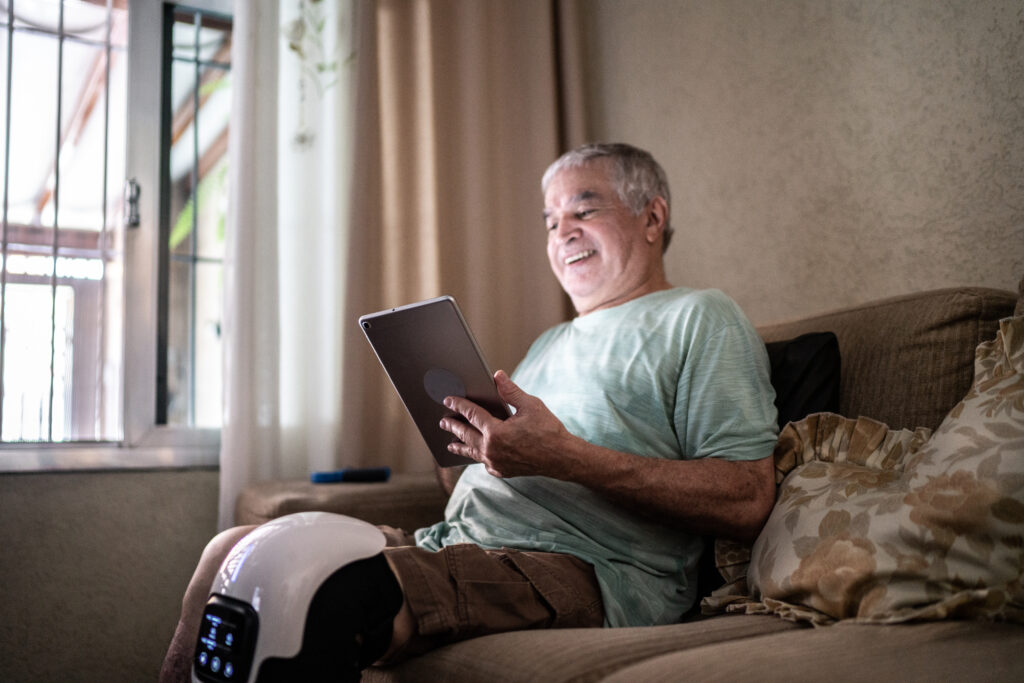The Truth About Knee Massagers: A Doctor of Chiropractic’s Perspective
22 July 2024

Knee pain is a common problem that affects millions of people worldwide. As a chiropractor, I encounter patients who struggle with knee issues daily. Recently, there has been a surge in the popularity of knee massagers, devices that promise relief from pain and improved joint function. However, while these gadgets may feel good, it is crucial to understand what they do and, more importantly, what they do not do.
The 5 Main Causes of Knee Pain:
Knee pain can be caused by several issues, including:
- Osteoarthritis: Degeneration of the cartilage in the knee joint, leading to pain, swelling, and stiffness.
- Tendinitis: Inflammation of the tendons, often caused by overuse or repetitive movements.
- Ligament Injuries: Tears or sprains in the knee ligaments, such as the ACL or MCL, commonly resulting from sports injuries.
- Meniscus Tears: Damage to the meniscus, the cartilage that cushions the knee joint, usually due to trauma or ageing.
- Bursitis: Inflammation of the bursae, the tiny fluid-filled sacs that cushion the knee joint.
Most knee problems are not isolated. In most cases, patients suffering from knee issues also suffer from hip, back, or ankle pain. There is often a larger issue with misalignment, where the body’s weight puts uneven pressure on different parts of the knee, leading to wear and tear.
These underlying conditions require proper diagnosis and treatment, as well as a consultation that considers the person’s overall health, posture, and movement. You have to consider more than just the knee to get a full and proper diagnosis before the most effective treatment can start.
While knee massagers may provide temporary relief, they do not address these root causes.
What do Knee Massagers Do?
Knee massagers typically combine vibration, compression, and heat to provide a soothing sensation. Here’s a breakdown of their primary functions:
- Vibration: Gentle vibrations can stimulate blood flow and provide a massaging effect that may reduce the sensation of pain.
- Compression: Some knee massagers offer a compression feature, which can help temporarily reduce mild swelling.
- Heat: Many devices incorporate heat therapy, which can relax muscles and provide comfort.
While these features can offer temporary relief and feel like a pleasant experience, they do not tackle the underlying issues causing knee pain.
What are the limitations of Knee Massagers?
Knee massagers may feel nice, but it is essential to understand their limitations. Here are some crucial points to consider before using a knee massager:
- Symptomatic Relief Only: Knee massagers address symptoms, not causes. They may temporarily reduce pain but do not repair damaged tissues or effectively reduce inflammation.
- No Long-term Benefits: Relying on a knee massager without addressing the root cause of knee pain can lead to prolonged suffering and worsen the condition over time.
Heat vs. Ice
Heat is a common feature in knee massagers and is often perceived as comforting. However, when dealing with inflammation, ice is generally more beneficial. Here’s why:
- Ice Therapy: Ice helps constrict blood vessels, reducing blood flow to the affected area, which in turn helps decrease swelling and inflammation. It is beneficial in acute injuries and flare-ups of chronic conditions. Arthritis is often accompanied by inflammation so using gentle ice treatment can help reduce inflammation and reduce arthritic pain.
- Heat Therapy: While heat can relax muscles and provide a soothing sensation, it can also increase blood flow, potentially exacerbating inflammation and swelling.
Ice is typically the better choice for conditions involving inflammation, such as tendinitis or bursitis. Heat can be helpful for muscle relaxation and relieving stiffness but should be used with caution if inflammation is present.
Knee massagers can be a pleasant addition to your pain relief toolkit, offering temporary comfort and relaxation, but are not a substitute for proper professional diagnosis or treatment. A knee massager cannot be relied upon to address the underlying causes of knee pain.
If you are experiencing knee pain, it is essential to consult with a qualified healthcare professional, such as a Chiropractor, who will determine the underlying cause and develop a comprehensive treatment plan tailored to your needs. Your knees are vital to your mobility and overall well-being, so give them the care and attention they deserve.
My Tip: look after your knees; you’ll miss them when they are gone!
John Gil
